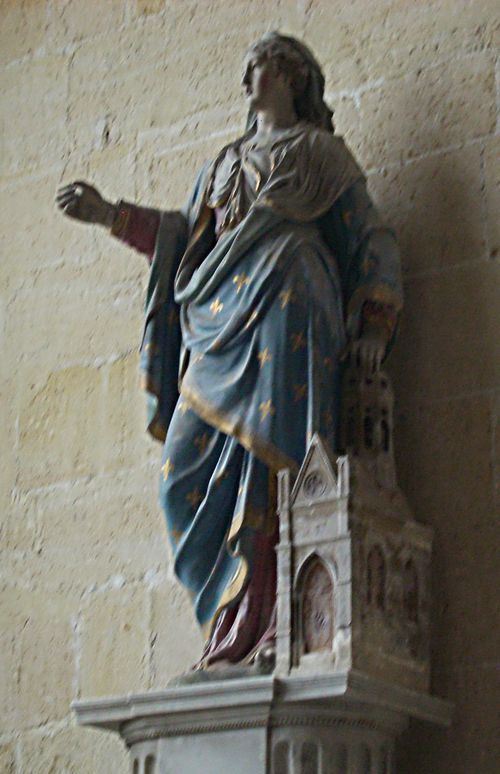What was certain was that by the turn of the fifth century, the Burgundians were firmly situated on the Rhine and received the blessing of Rome to occupy and hold the region for the Empire. This first kingdom was a short-lived failure. The Burgundian’s zealous expansion caused consternation in Rome and resulted in a vicious reaction from Aetius who, either singly or with his clients the Huns, delivered a devastating blow to the fledgling Burgundian kingdom. After seeing them sufficiently weakened, Aetius thought enough of their prowess in battle to re-settle them in an area more beneficial to Rome.
This second kingdom of the Burgundians originated in Sapaudia and eventually expanded to include eastern Gaul. It was more successful than the first, probably because it was constructed and held by a family, the Gibichungs, led first by Gundioc and Chilperic I and then by Gundobad, who continued to view it as land held for the greater Roman Empire, rather than as their own possession. Whether a fallacy or not, this enabled the Burgundian rulers to maintain continuity between the old provincial government and their new amalgamation and softened the changes felt by the Gallo-Romans. As a result, the Gallo-Roman inhabitants of the Burgundian protectorate seemed to have regarded the Burgundians as the most desirable, or at the very least the most benign, of barbarian overlords. The Burgundian’s tepid Arianism contributed to this impression, but the primary factor in the relative ease with which Gallo-Romans accepted Burgundian rule may have been a result of the Burgundian’s long exposure to Rome and their adoption and familiarity with its social, political and cultural norms. In this, it was quite possible that the tenuous evidence of Roman blood in their veins, whether real or legend, had the affect of instilling in the Burgundians a sense of kinship to the Romans and, by extension, the Gallo-Romans.
The Burgundians made accommodation for the rights of Romans in their laws and in their religion and were relatively benevolent rulers. The lack of written evidence that can be directly assigned to Burgundians, with the notable exception of the Lex Gundobada, could be attributed to the relative ease in which they assimilated Roman culture, language and institutions into their own society. This also reveals that Burgundian society was not distinct enough and did not have strong enough traditions to maintain a unique character in the face of Roman culture. This ability to, at the least, embrace other societal structures or, at the most, lose their own cultural identity to them, contributed to their downfall.
The Burgundians repeatedly accommodated other groups by allowing them to settle in Burgundy. Alamans already inhabited the lands around Geneva and the Jura Mountains when the Burgundians took control of the region as foederati. The Lex Gundobad stated that "all assimilable elements, Visigoths and even runaway slaves, should be accepted into the community." Their attempts to accommodate many within their realm, which was so instrumental in maintaining internal peace, had the effect of making enemies of many outside and inside their realm. This apparent weakness of conviction may have prompted Catholic ideologues within Burgundy to seek other, more convicted patrons.
Clovis and his Franks used the Arianism of the Burgundians as an excuse to attack around A.D. 500, probably with the support of some Catholic bishops within Burgundy. It was only later that legends of Clotilda’s desire for revenge as a reason for these attacks came about. Later, after the Burgundians had converted to Catholicism under Sigismund, Theoderic used their apparent betrayal of Arianism and a purported desire to exact revenge for the killing of his grandson as excuses for his coordinated attack with the Franks.
Whatever the reason given, the primary causes of the downfall of the Burgundian kingdom were Sigismund’s lapses in leadership and, especially, the Burgundian kingdom’s vulnerable geography. Situated on lands straddling the Alps, the Burgundians were caught between Goths in the south and Franks to the north, both of whom were desirous of the rich Burgundian lands. Though religion and revenge may have only been convenient excuses for invasion, it is probable that the Burgundians eventually would have had to face either, or both, of its neighbors in armed conflict.
The obvious legacy of the Burgundians is the Nibelungenlied, their namesake region in France, and the wine produced there. Yet, they owe their most important legacy to that singular woman, the Burgundian princess Clotilda. Her marriage to Clovis was in some way related to one of the most significant royal conversions in history. Whether Clotilda inspired Clovis’s conversion directly or whether he was inspired for political reasons, their marriage enabled his acceptance by the Roman Catholic Church and he became the first barbarian king religiously aligned with his Roman subjects. Clovis and his armies, and the valuable support of the Pope, conquered the Arian Christians and preserved Catholic Christianity in the West.
Although they showed great latitude towards their Catholic subjects, the Arian Burgundian kings were reluctant to fully embrace Catholicism. Though some of the Burgundian royal family, particularly the women, may have been Catholic, it was only after the ascension of Sigismund that a systematic dismantling of the Arian church within the Burgundian Kingdom occurred.
This apparent reluctance to both fully embrace Catholicism and actively denounce the Arian heresy did not ultimately cause their downfall. Rather, it was the acts of Sigismund that sealed the Burgundian fate. Sigismund’s own Catholicism and few charitable acts could not insulate him against those who opposed him. He alienated many in the Church and his actions fomented rebellion among the ecclesiastics. Without their support, Sigismund was vulnerable to both internal strife and external invasion. His death did not quiet the storm. In disarray, and despite Godomar’s stubborn attempts to save it, the Burgundian Kingdom was ripe for conquest, and the Franks and Goths obliged. The Burgundians were assimilated into France and disappeared.
Like the other Germanic kingdoms, that of the Burgundians was, to quote Lucien Mussett, an:
elaborate synthesis of various elements, and the creation of a new civilization distinct both from that of late Antiquity and from that of Free Germany. It can be judged inferior to classical civilization, but its originality cannot be denied, and it cannot be considered simply as an indefinitely prolonged period of 'decadence.'
The Burgundians who crossed the Rhine in A.D. 406 were not an ethnically homogeneous group of Germans, but rather a group of Germans, some probably with Roman blood, who were united by shared traditions and strong leaders. Though their kingdoms ultimately ended in failure, the Burgundians provided an example of how disparate groups could survive and thrive if united under strong and able leadership, such as that provided by the militarily and politically astute Gundobad. Finally, it was the second Burgundian Kingdom, especially during the reign of Gundobad and the early years of Sigismund, that foreshadowed a Germanic and Roman cultural fusion that would be more famously realized in the age of Charlemagne.

